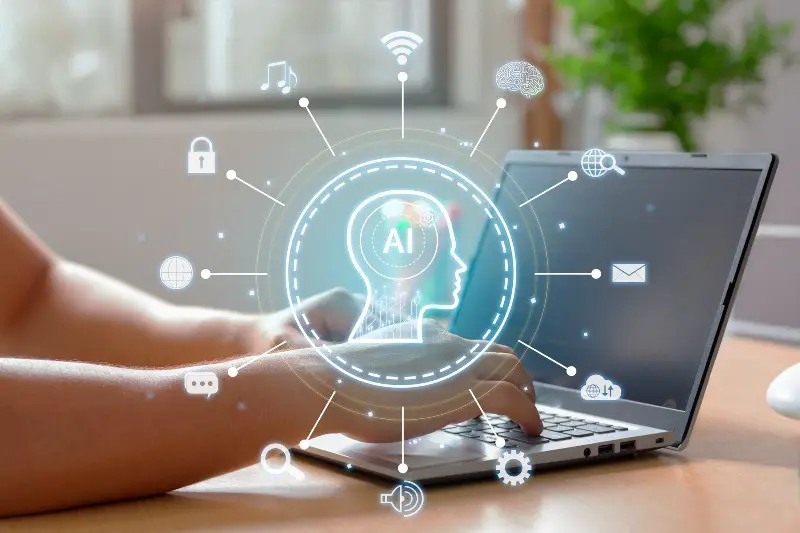Have you ever wondered how your smartphone knows what you like, or how a self-driving car knows how to get you home safely? That’s the magic of Black Box AI, a kind of artificial intelligence that’s both amazing and a bit mysterious. It’s used in many areas, from your smartphone apps to self-driving cars, but how it works can be quite puzzling, especially for those of us who aren’t tech wizards.
In this journey, we’ll unravel the mysteries of Black Box AI in a way that’s easy to understand, even if you’re not a computer genius. Think of this as your guide through a maze of high-tech wonders. We’ll explore how it’s used in manufacturing, by the general public, and even in robotics. Let’s dive into this intriguing world and discover the wonders and challenges of Black Box AI!
Manufacturing
In manufacturing, Black Box AI is like having a super-smart assistant who knows exactly what to do to make things run smoothly. It can predict when machines will need repair, help design products, and even control robots on the assembly line. This means products can be made faster, cheaper, and with better quality.
But, there’s a catch. Sometimes this AI makes decisions that even the experts don’t fully understand. What if it decides to change how something is made, and no one knows why? This is where Black Box AI in manufacturing can be a bit tricky. It’s powerful, but it’s important for people to keep learning about how it works.
General Public
For most of us, Black Box AI is part of our daily lives, even if we don’t realize it. It’s in our phones, our cars, and even in the online stores where we shop. It helps by making things more convenient and personalized, like suggesting a movie you might like or helping you avoid traffic jams.
However, because we don’t always understand how it makes decisions, it can sometimes feel a bit uncomfortable. For example, how does it know so much about what we like? Are our phones listening to us? Understanding a little about how Black Box AI works can make it less mysterious and more of a helpful tool in our lives.
Robotics
In the world of robotics, Black Box AI is the brain that helps robots learn and make decisions. This can be really cool, like robots that can help clean up a spill or even assist doctors in surgery. These robots get better over time as the AI learns from experience.
But, just like with other uses of Black Box AI, there are questions about how these robots decide what to do. If a robot messes up, figuring out why can be hard. That’s why it’s important for people who design and use these robots to understand as much as they can about the AI inside them.
Myths vs. Facts
Myth: Black Box AI is Always Correct
Fact: Just like humans, Black Box AI isn’t perfect. It makes decisions based on data, and if that data has mistakes, then the AI’s decisions might be off too.
Myth: We Can’t Control Black Box AI
Fact: We might not understand everything about how Black Box AI thinks, but we can still control what it does. Like training a dog, we can teach it what’s right and wrong, even if we don’t know exactly how it thinks.
Myth: Black Box AI Understands Everything
Fact: Just because AI can process a lot of information, doesn’t mean it understands everything. It’s like being able to read a book in a language you don’t understand – you see the words, but the meaning might be lost.
FAQ
What is Black Box AI? Black Box AI is like a magic trick. You see the start and the end, but not the middle. It’s when we use AI to make decisions or predictions, but we can’t easily see how it got there.
Why is it called Black Box? It’s called “Black Box” because it’s like a box where you can’t see inside. You know what you put in (data) and what you get out (decisions or predictions), but the process inside is hidden, like a locked box.
Is Black Box AI Dangerous? It can be, like driving with a blindfold. If we don’t know how it makes decisions, it can be risky, especially in important areas like healthcare or law. But it can also be really helpful if used carefully.
Can We Trust Black Box AI? Trusting Black Box AI is like trusting someone you just met. You need to be careful and understand the limits. It’s important to use it in ways where we can manage the risks.
How Can We Make Black Box AI Better? Making Black Box AI better is like solving a mystery. We need to work on ways to understand how it makes decisions. This means better technology and rules to make sure it’s fair and safe.
Google Snippets
Black Box AI: “Black Box AI refers to artificial intelligence systems whose internal logic is not accessible or understandable by humans.”
AI in Manufacturing: “AI in manufacturing offers personalized learning experiences and automated administrative tasks, enhancing teaching and learning processes.”
AI in Robotics: “AI in robotics is revolutionizing legal research, contract analysis, and predicting legal outcomes, but raises ethical and accountability questions.”
Black Box AI Meaning
Techopedia: “Black Box AI is a type of AI where the decision-making process is not visible to the observer or user.”
IBM Research: “Black Box AI involves complex models, like neural networks, where the exact way input data is transformed into output decisions is not clearly understandable.”
Science Daily: “In Black Box AI, the algorithms make decisions or predictions that are difficult for humans to interpret, due to the complexity of the underlying model.”
Did You Know?
- The term “Black Box” in Black Box AI actually comes from aviation, where a black box records flight data but its workings are not easily understood by the public.
- Some Black Box AI systems can process more data in a day than a human could in a lifetime, yet understanding their decision-making process remains a challenge.
In conclusion, Black Box AI is a fascinating but complex part of our rapidly advancing technological world. It holds great promise in fields like robotics, education, and law, but also poses significant challenges due to its opaque nature. Understanding and demystifying this technology is crucial, particularly for students, educators, and legal professionals, to ensure it is used ethically and effectively. As we continue to integrate AI into various aspects of our lives, it is imperative that we strive to make these systems more transparent and accountable.
References
- Explainable AI that uses counterfactual paths generated by conditional permutations of features. This method is used to measure feature importance by identifying sequential permutations of features that significantly alter the model’s output. The paper discusses the evaluation strategy of comparing the feature importance scores computed by explainers with the model-intern Gini impurity scores generated by the random forest, which is considered as ground truth in the study.
- Thinkful offers insights on how to address the “black box” problem in AI through Explainable AI (XAI) and transparency models. They discuss techniques like Feature Importance Analysis, Local Interpretable Model-agnostic Explanations (LIME), SHapley Additive exPlanations (SHAP), Model Distillation, and Decision Rules, which are designed to make AI models more interpretable and transparent. This is especially important in applications where decisions can have far-reaching consequences, such as healthcare or finance
- Superb AI‘s blog discusses the challenges of the reliability of AI and its adoption into society, given the opaque nature of black box models. The widespread use of AI technologies presents issues related to data bias, lack of transparency, and potential infringement on human rights. The article addresses how Explainable AI is crucial for building AI systems that are not only powerful but also trustworthy and accountable.






